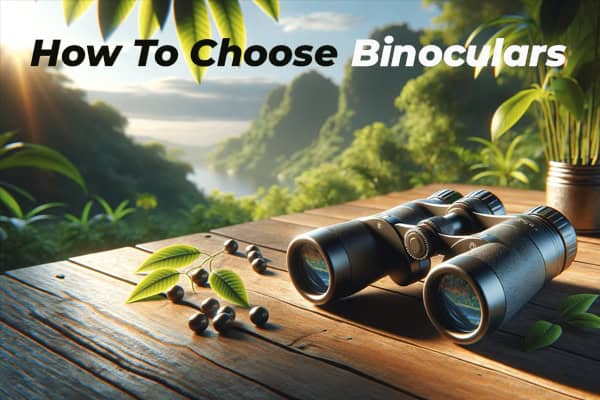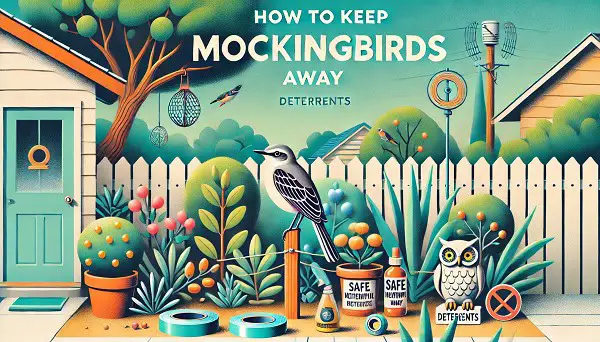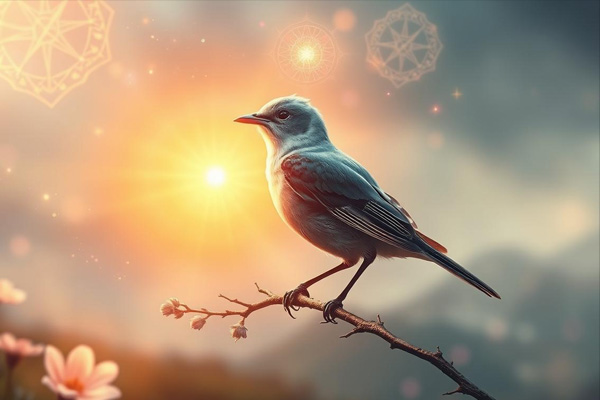How To Choose Binoculars: Expert Tips for Buyers
How to Choose the right pair of binoculars might seem hard, but with expert advice, you can easily find the best one for you. This guide will cover important factors like magnification, lens material, prism design, and more. It will also look at brand reputation to help you make a smart choice.
Are you looking to improve your outdoor adventures, birdwatching, or stargazing? The key to better experiences is picking the right binoculars that fit your needs and likes. Let’s explore how to pick the best binoculars for your activities.
Binocular Magnification and Size
When picking binoculars, think about magnification and the size of the objective lens. These aspects are key to how well your binoculars will work.
Magnification
The first number in the binocular specs shows how much closer objects look. For everyday use, 7-10x magnification is best. It gives clear images and is easy to use.
For activities like hunting at a distance, 12x magnification might be better. But, it can be harder to keep steady.
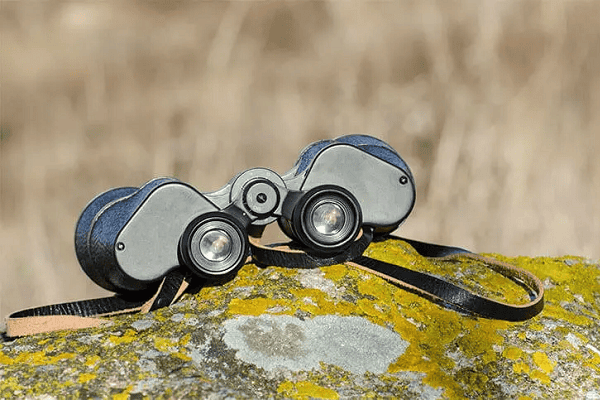
Objective Lens Size
The size of the objective lens, the second number, affects how bright and easy to carry the binoculars are. Bigger lenses, like 42mm or 50mm, let in more light, making images brighter and clearer. But, they’re also bigger and heavier, which can be a drawback.
Smaller lenses, around 32mm, are lighter and easier to carry. Yet, they might not let in as much light, so the image could be less bright.
Choosing binoculars means finding a balance between binocular magnification, objective lens size, binocular brightness, and binocular portability. This balance is key to meeting your needs and liking.
Glass vs Plastic Lenses: Weighing Image Quality
Choosing between glass and plastic lenses for binoculars affects their image quality and performance. Glass lenses are known for their clear and sharp images, especially with Extra-low Dispersion (ED) glass. They are also more resistant to scratches, keeping your binoculars looking new for a long time. But, they can be heavy, which might cause fatigue when using them for a long time.
Plastic lenses, on the other hand, are tough and can withstand impacts well. They are also lighter, making them more comfortable to hold. But, they might scratch easily and don’t match the image quality of glass lenses. The coatings on lenses also matter a lot. Multi-layer coatings let more light through and reduce glare better than single-layer ones.
Choosing between glass and plastic lenses depends on what you need most. If you want the best image quality, go for glass. But if you’re looking for something durable, light, and affordable, plastic might be better. Remember to think about the lens coatings and the binoculars built to get the best view.
Binocular Prism Design
The prism design in binoculars is key to how deep and detailed images appear. There are two main types: Porro prisms and roof prisms. Each has its own benefits. Knowing the differences helps you pick the right binoculars for you.
Porro Prisms: 3D Viewing and Wider Lens Spacing
Porro prism binoculars give you better depth perception and a wide view. This is because the lenses are farther apart, which helps your eyes work together better. They also cost less than roof prism binoculars, making them a good choice for those watching their budget.
Even though they’re cheaper, Porro prism binoculars can still offer great optical quality. They can match the quality of more expensive roof prism models.

Roof Prisms
Roof prism binoculars are more compact and lightweight. Their lenses are in a straight line, making them easy to carry around. They might not be as good at showing depth as Porro prisms, but the latest technology has closed the gap.
Now, high-end roof prism binoculars can match the image quality of Porro prisms. This makes them a top pick for those who value being able to carry their binoculars easily.
How To Choose Binoculars for Specific Activities
Choosing the right binoculars is key, no matter if you’re into birdwatching, hunting, or stargazing. The right pair can greatly enhance your experience.
Bird Watching and Wildlife Viewing
For bird watching and wildlife, look for binoculars with a wide field of view and moderate magnification (7-8x). This makes it easier to spot and track fast-moving animals. Binoculars with up to 10x magnification are also good for getting a closer look without missing the action.
Hunting: Long-Range vs Forested Areas
Hunters need specific binoculars too. For spotting targets far away, go for higher magnification (10-12x). But in dense forests, lower magnification (8x or less) is better. It gives you a wider view to move through the woods safely.
Stargazing and Astronomy
For stargazing, big objective lenses (50mm+) are crucial to see faint stars. Aim for magnification of 15x or more for clear views of distant objects. Make sure the exit pupil is at least 5mm for best performance in the dark.
Factoring in Comfort and Durability
Choosing binoculars means thinking about their comfort and how long they last. You’ll use them for outdoor activities, so they must handle the elements well. They should also be comfy, especially if you wear glasses.
Eye Relief and Eyecups for Eyeglass Wearers
Eye relief is key for a wide view, especially for glasses wearers. Adjustable eyecups make a big difference in comfort. They let you set the binoculars right, easing eye strain. Aim for binoculars with at least 15mm of eye relief for comfort with glasses.
It’s also key to pick binoculars that are tough and can stand up to the outdoors. If you’re into hiking, hunting, or birdwatching, look for ones that are water-resistant or waterproof. A durable, weatherproof design keeps your binoculars safe and working well, no matter the weather.
Budgeting
Choosing binoculars means looking at your budget closely. High-end models offer great durability and image quality. But, there are also mid-range options that give great value for your money. It’s all about finding the right mix of features, performance, and cost.
Binocular prices vary widely, from $150 to $3,500. So, set a budget based on how you plan to use them. If you love birdwatching or watching wildlife, spending more on a high-end pair might be worth it. But, if you just want binoculars for casual outdoor activities, a budget option might be enough.
The value you get from binoculars depends on balancing their features, performance, and price. Think about what you need and what you can afford. This way, you can pick a pair that offers great quality and value within your budget.
Waterproof and Weather-Resistant Options
If you plan to use your binoculars in wet or bad weather, getting waterproof or water-resistant ones is smart. These special binoculars have sealed, nitrogen-filled bodies. They stop fogging and water damage, so they work well even in tough conditions.
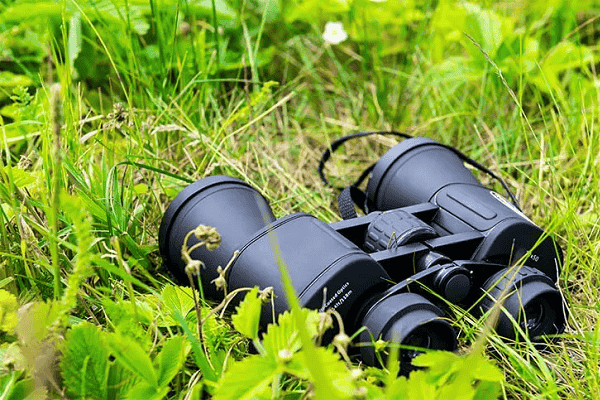
Waterproof binoculars can be fully underwater without leaking. Brands like Nocs say their waterproof binoculars can take up to 3 feet of water for 30 minutes. Weatherproof ones can handle showers or even nitrogen-purged ones for better protection against moisture, dust, and sand. This is great for outdoor fans like birdwatchers.
Nitrogen is better for keeping fog away than argon because it’s better for the planet. Fogproof binoculars stop mold from growing and keep images clear in changing weather. This is super useful for hikers, boaters, and those who watch wildlife in different weather.
When looking for waterproof or weather-resistant binoculars, think about the lens size too. Bigger 50mm lenses let in about 42% more light than 42mm ones. This makes a big difference for stargazing, hunting in the woods, or watching wildlife at dawn and dusk.
Check Our Previous Articles:
How To Choose Binoculars: Expert Brand Reputations
How to Choose the right binoculars? This means looking at the brand’s reputation and history. A well-known brand with a history of quality gives you peace of mind. You know the product will last long and perform well.
Search for brands with good warranties and positive reviews from customers. These brands are known for their quality and making customers happy. Their products are durable and give you the performance you want.
Also, check how the brand stays up-to-date with new technology. Top binocular brands use the latest features and coatings. This makes the images clearer and brighter, improving your experience.
How to Choose a brand with a good reputation means your binoculars will last a long time. Whether you’re watching birds, hunting, or looking at the stars, you can trust them. Buying from a trusted brand is a smart choice for a lasting investment.
Conclusion
When looking for the right binoculars, think about magnification, lens quality, prism design, and more. This guide has given you the tips to pick the best pair for your needs and budget. Now, you’re ready to enjoy the world around you.
Are you into bird watching, loving nature, or stargazing? The right binoculars can make your outdoor time better. They let you see more clearly in different lights.
How to Choose the right binoculars means matching your needs with what they offer. This way, you’ll find the perfect binoculars for your adventures. Enjoy exploring and let your views be full of wonder and discovery!

